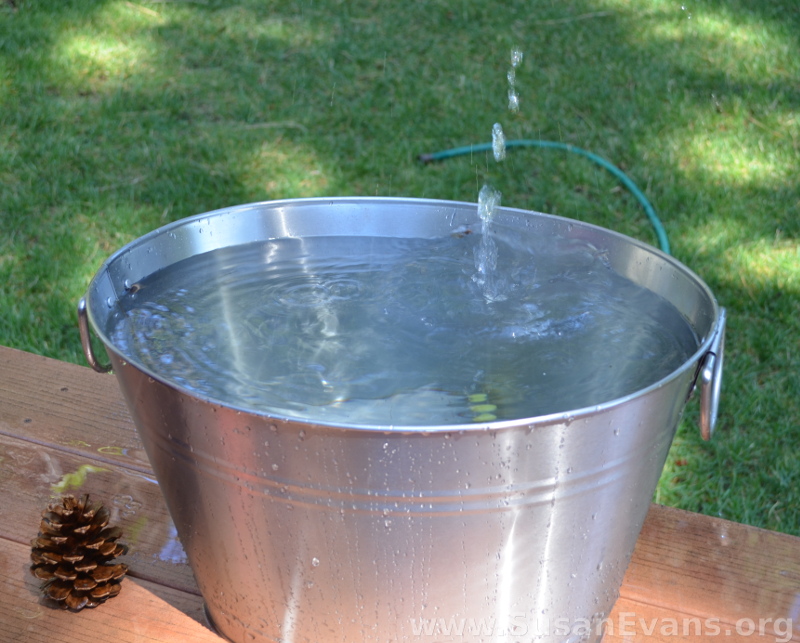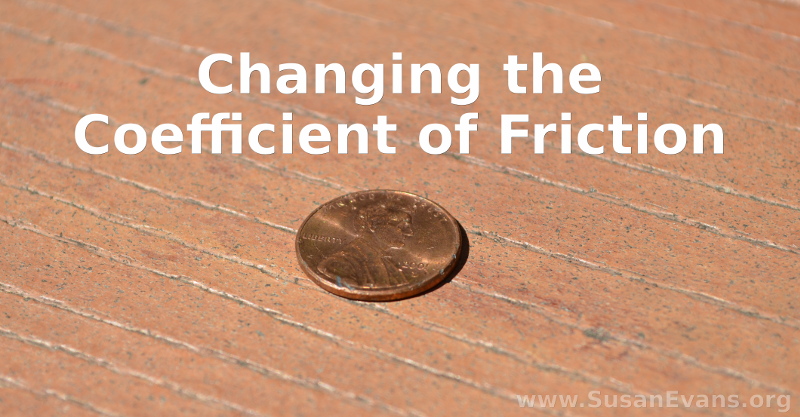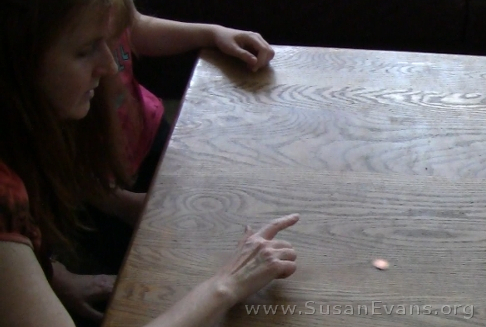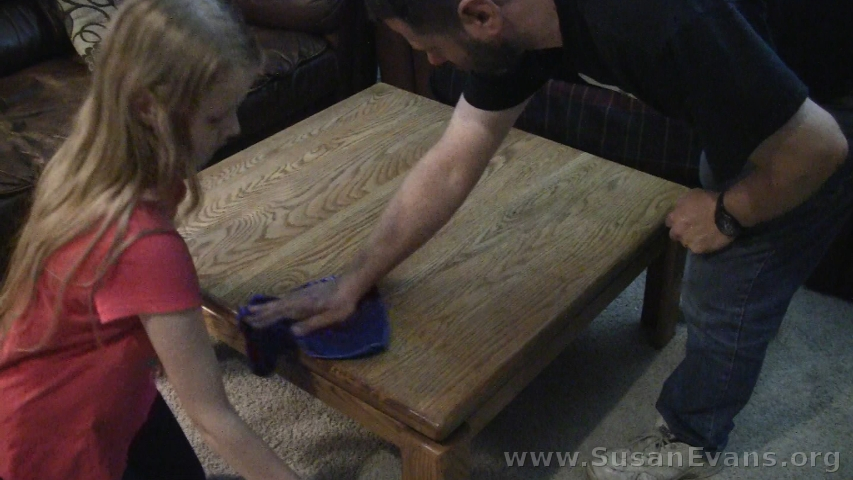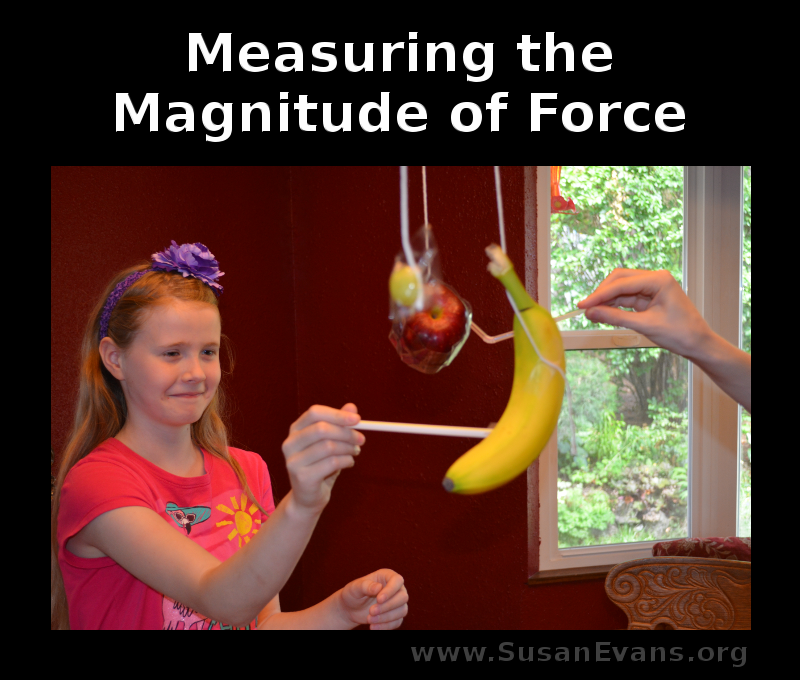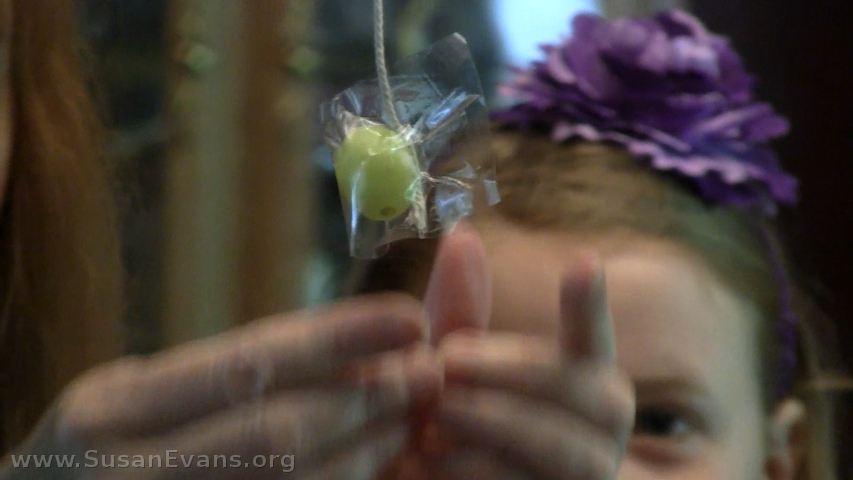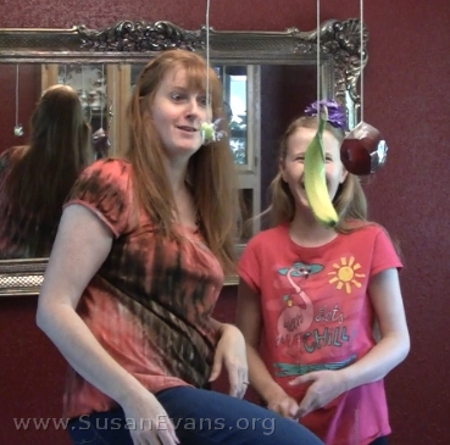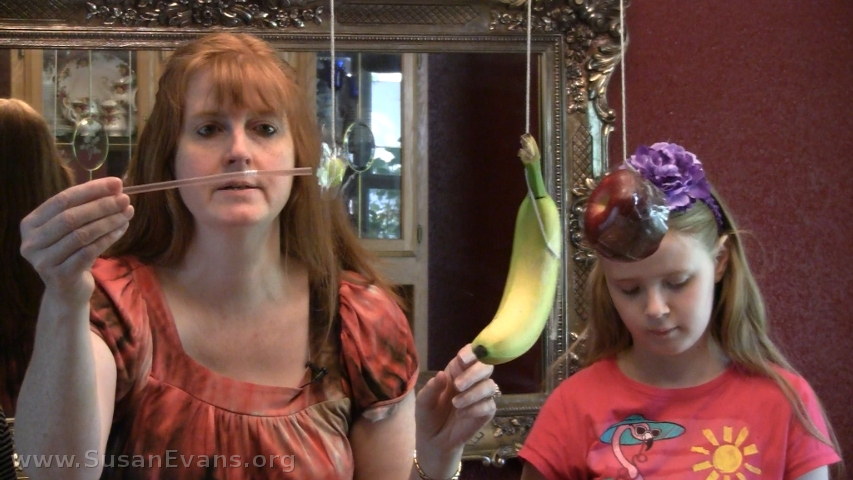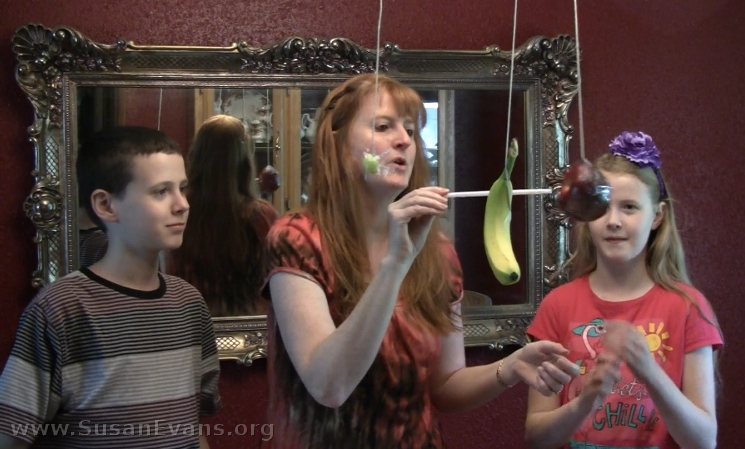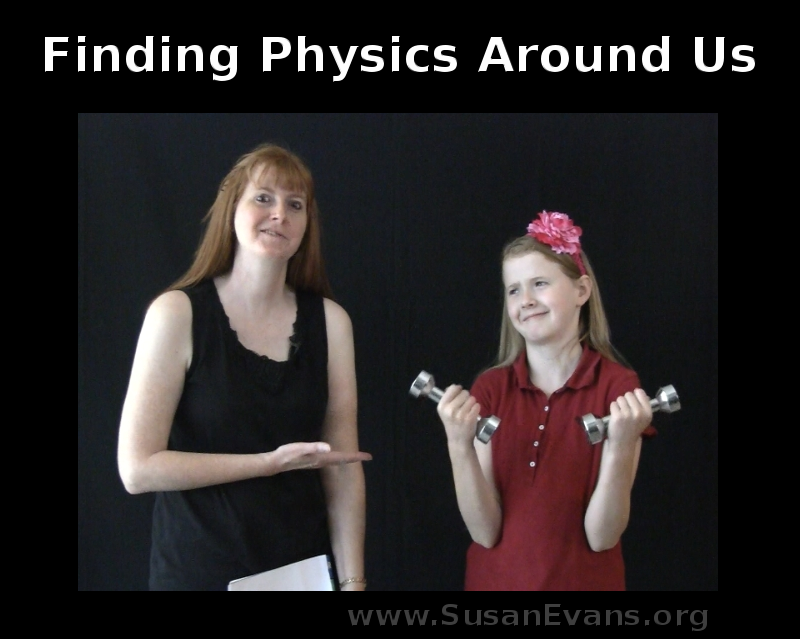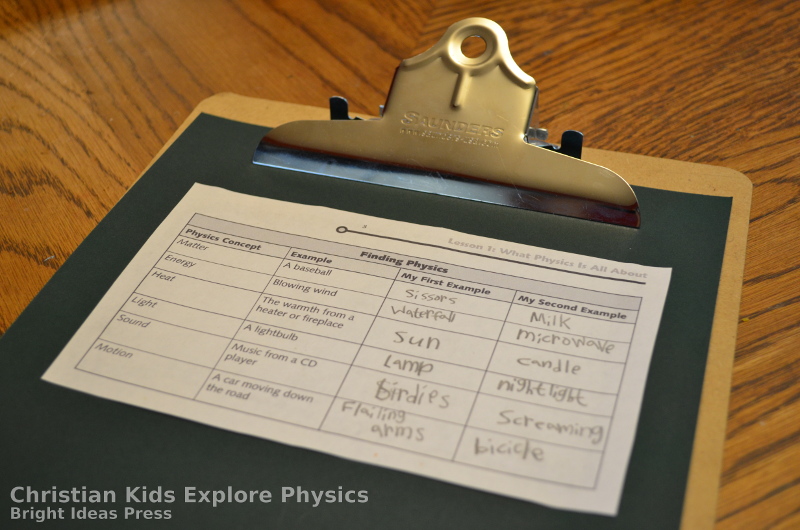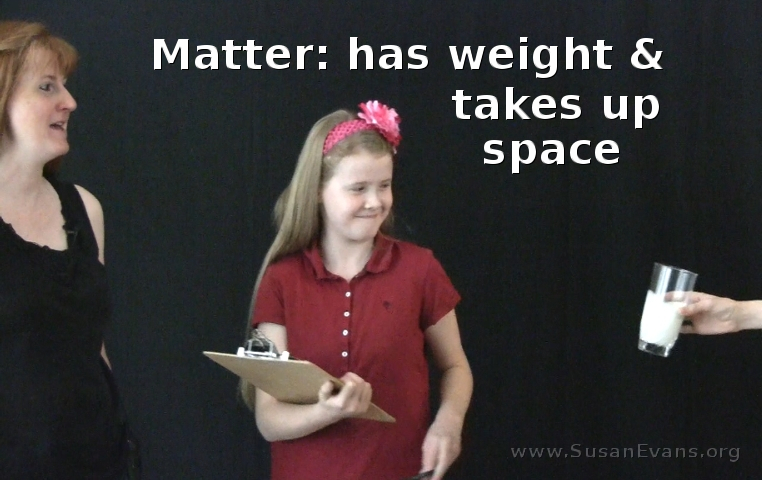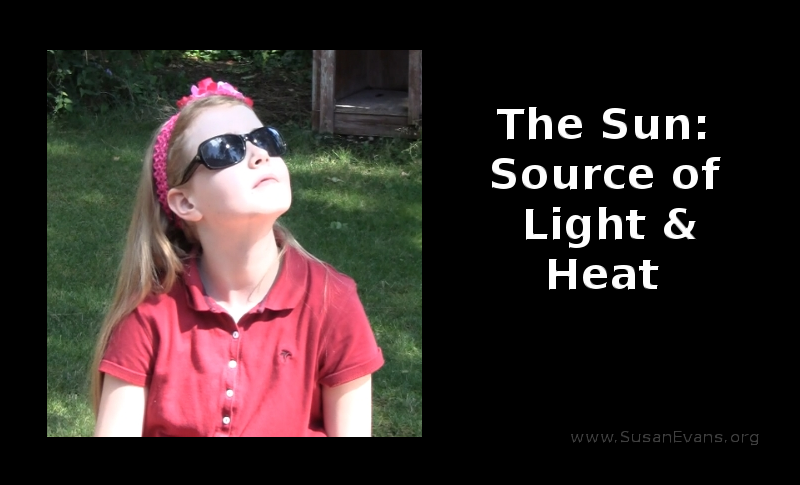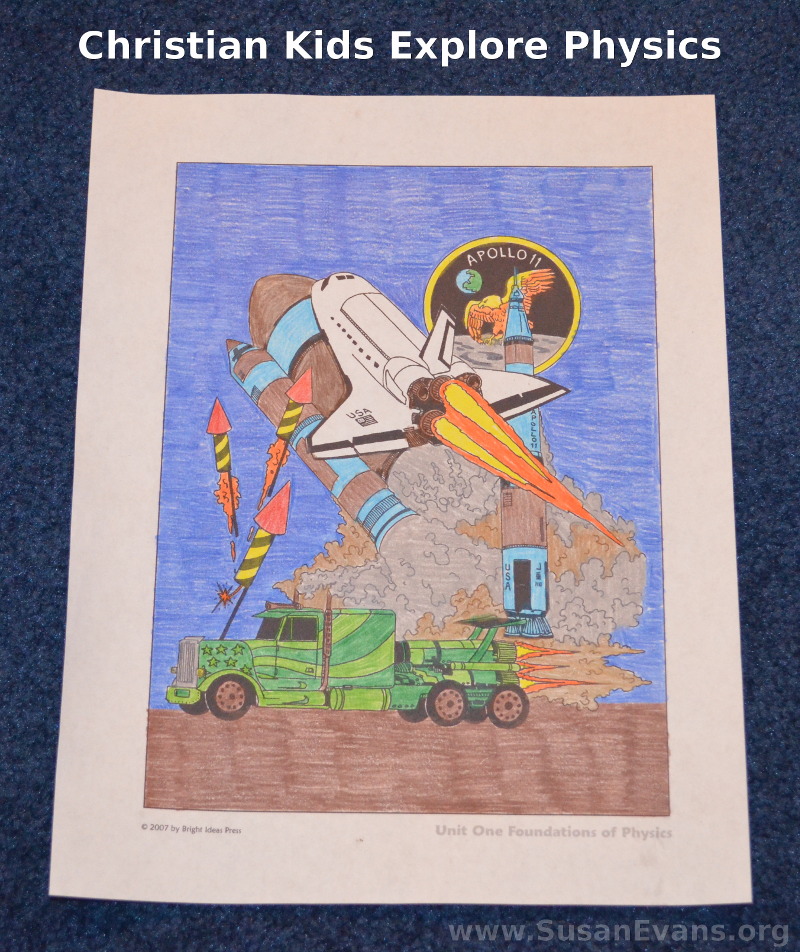In today’s experiment, we will be turning potential into kinetic energy as we hold various objects above a bucket of water and release them to see how far they splash.
Sounds fun, doesn’t it?
You will want to do this experiment outside on a sunny day. The person dropping the objects needs to be willing to get wet, especially when the person releases the heavier objects like the banana and the can of baked beans!
Turning Potential into Kinetic Energy (The Experiment)
Step 1: Gather supplies. You will need a large tub, a hose, a ruler, and various objects to drop into the water. We used a marshmallow, a grape, a nut, a quarter, a pine cone, a banana, and a can of baked beans.
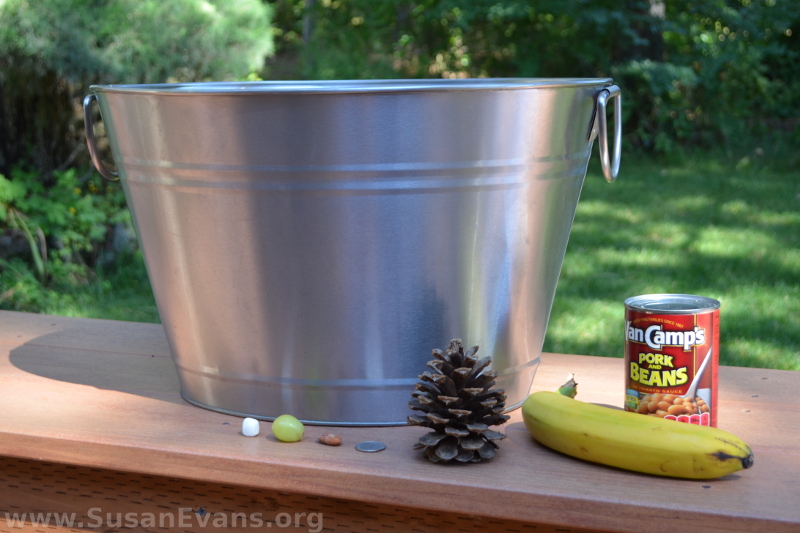 This post contains affiliate links. I was compensated for my work in writing this post.
This post contains affiliate links. I was compensated for my work in writing this post.
Step 2: Fill the tub with water and have someone hold a ruler on the side of the tub. Print out the chart on page 143 of Christian Kids Explore Physics by Bright Ideas Press, and clip it to a clipboard. Record your findings on the chart, or you can just call out how many inches the water splashed upwards.
Step 3: Drop each object and watch how far the water splashes. The objects with more mass have more potential energy. When an object is held above the water, there is potential energy in the object. Potential energy is converted into kinetic energy as soon as you release the object because it is now moving.
Let me describe it another way: A log of wood has potential energy. It’s just sitting there and doesn’t look like it has energy, but as soon as you light it on fire, the potential energy is converted into kinetic energy.
Energy will be released if something happens to an object with potential energy. As long as an object just sits there, it’s only potential. When movement or chemical change occurs, you now have kinetic energy.
Video of the Splashing Experiment:
Take a look at how far each of our objects splashed:
Hope you enjoyed our fun experiment!

